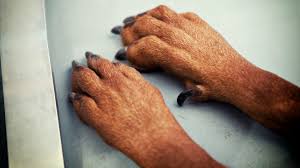Terminology, Vertebrate Story, Chordates
1/71
There's no tags or description
Looks like no tags are added yet.
Name | Mastery | Learn | Test | Matching | Spaced |
|---|
No study sessions yet.
72 Terms
Homology
Similarity due to shared ancestry (e.g., vertebrate limbs).
Analogy
Similar function but not derived from a common ancestor (e.g., wings of birds and insects).
Homoplasy
Similar appearance or traits that evolved independently (e.g., dorsal fins in sharks and dolphins). These concepts can overlap.
Radial symmetry
Body parts arranged around a central axis; multiple planes of symmetry (e.g., jellyfish).
Bilateral symmetry
Body divided into right and left halves along one plane (e.g., humans).
Sagittal plane
Divides body into left and right.
Midsagittal
Directly along the midline.
Parasagittal
Off-center from the midline.
Frontal (coronal) plane
Divides body into dorsal (back) and ventral (front).
Transverse plane
Divides body into cranial (head) and caudal (tail) portions.
Cranial
Towards the head.
Rostral
Towards the nose (on the head).
Caudal
Towards the tail.
Medial
Toward the midline.
Lateral
Away from the midline.
Proximal
Closer to the body core.
Distal
Farther from the body core.
What are the five fundamental features shared by all chordates at some point in their life cycle? Know the basic structure and purpose of these features.
Notochord: Flexible rod for support.
Pharyngeal pouches/slits: Feeding and respiration.
Endostyle/Thyroid gland: Filter feeding or hormone production.
Dorsal hollow nerve cord: Becomes CNS in vertebrates.
Post-anal tail: Locomotion.
Notochord
Flexible rod providing support in chordates.
Is the notochord the same as the spinal cord in later vertebrates? If not, what structure does it form?
No. The notochord is not the spinal cord. It becomes part of the vertebral column, specifically the intervertebral discs.
Pharyngeal pouches/slits
Used for feeding and respiration in chordates.
Dorsal hollow nerve cord
Becomes central nervous system in vertebrates.
Post-anal tail
Structure used for locomotion in chordates.
Describe the structure and function of the vertebral column. Name the basic components of a vertebra.
Structure: Series of vertebrae protecting the spinal cord and providing support.
Components: Centrum, neural arch/spine (dorsal), hemal arch/spine (ventral), intervertebral discs.
Describe the key features of "prevertebrates". What adaptation allowed for increased feeding/respiratory efficiency?
Prevertebrates had pharyngeal musculature and springy cartilage forming a muscular pump, improving feeding and respiration.
Agnathans and their feeding mechanisms
Jawless vertebrates such as hagfish and lampreys.
Use muscular pharyngeal pump and tongue-like structures for feeding.
How do the vertebral columns of hagfish and lampreys differ? What is a unique characteristic of many lampreys?
Hagfish: Vertebra-like elements in larvae, lost in adults.
Lampreys: Cartilaginous vertebrae.
Unique trait: Many are parasitic.
Gnathostomes
Jawed vertebrates with jaws evolved from rostral pharyngeal arches that allowed for improved prey capture and feeding efficiency.
Chondrichthyes
Class of cartilaginous fish, including sharks and rays.
What are the distinguishing features of Chondrichthyes?
Features: Cartilaginous skeleton, placoid scales, electroreceptors, paired fins, 5–7 gill slits.
What are the two major groups within Chondrichthyes?
Groups:
Holocephalans (chimeras): Upper jaw fused to braincase, grinding plates.
Elasmobranchs (sharks, skates, rays): More diverse.
What adaptations do they have for buoyancy?
Buoyancy: Oil-filled liver and reduced bone density.
Actinopterygii
Ray-finned, lighter scales, fish with a swim bladder.
Sarcopterygii
Lobe-finned, internal bones in fins, paired lungs (lungfish), prominent notochord.
Ganoid scales
Hard, enamel-like, mineralized scales.
Interlocking and inflexible.
Found in primitive ray-finned fish like sturgeon and gar.
Physostomous swim bladder
Connected to esophagus; gas exchange occurs by gulping air.
Physoclistous swim bladder
Closed system; gas diffuses from blood.
What features of Tiktaalik roseae make it a transitional example between fish and tetrapods?
Flat head with dorsal eyes.
Robust pectoral fins.
No bony connection between skull and pectoral girdle.
What are Lissamphibians? List their key characteristics and provide examples.
Modern amphibians: Frogs, salamanders, caecilians.
Traits: Paired lungs, gills in larvae, skin respiration, mostly scaleless.
Urodela: Salamanders
Anurans: Frogs, toads
Apoda: Caecilians
What is the key innovation of Amniotes?
Amniotic egg: Key innovation of amniotes that allows terrestrial reproduction.
Name the three groups of mammals and provide an example of each.
Monotremes: Platypus
Metatherians: Kangaroo (marsupials)
Eutherians: Humans (placental mammals)
Monotremes
Egg-laying mammals, such as the platypus.
Metatherians
Marsupials, such as kangaroos.
Eutherians
Placental mammals, such as humans.
What are the three primary germ layers in organogenesis, and what tissues/organs do they give rise to? Ectoderm
Epidermis, nervous tissue, cranial muscles.
What are the three primary germ layers in organogenesis, and what tissues/organs do they give rise to? Mesoderm
Dermis, skeletal/muscle tissue, circulatory system, kidneys.
What are the three primary germ layers in organogenesis, and what tissues/organs do they give rise to? Endoderm
GI/respiratory lining, liver, pancreas
How does body size relate to surface area and volume? What are the consequences of this relationship for physiological processes?
As body size increases, surface area grows slower than volume.
Larger organisms need specialized structures (lungs, intestines) for efficient exchange.
Why is surface area important for material exchange?
Greater surface area allows more efficient diffusion of gases, nutrients, and waste.
Monophyletic group
Includes ancestor and all descendants.
Paraphyletic group
Includes ancestor but not all descendants.
Polyphyletic group
Grouped by traits, not by common ancestry.
Neural crest cells
Stem cells that give rise to various structures in vertebrates (e.g., cranial nerves, pigment cells).
Ectodermal placodes
Thickenings of ectoderm that develop into sensory organs.
Placoid scales
Tooth-like scales that reduce drag and protect skin in Chondrichthyes.
Cranium function
Protects the brain and sensory organs in vertebrates. Derived from neural tube and cartilage/bone.

On a dog, the "dew claw" is located on which aspect of the foot?
Medial
Which joint is immediately proximal to the carpus in a cat
Elbow